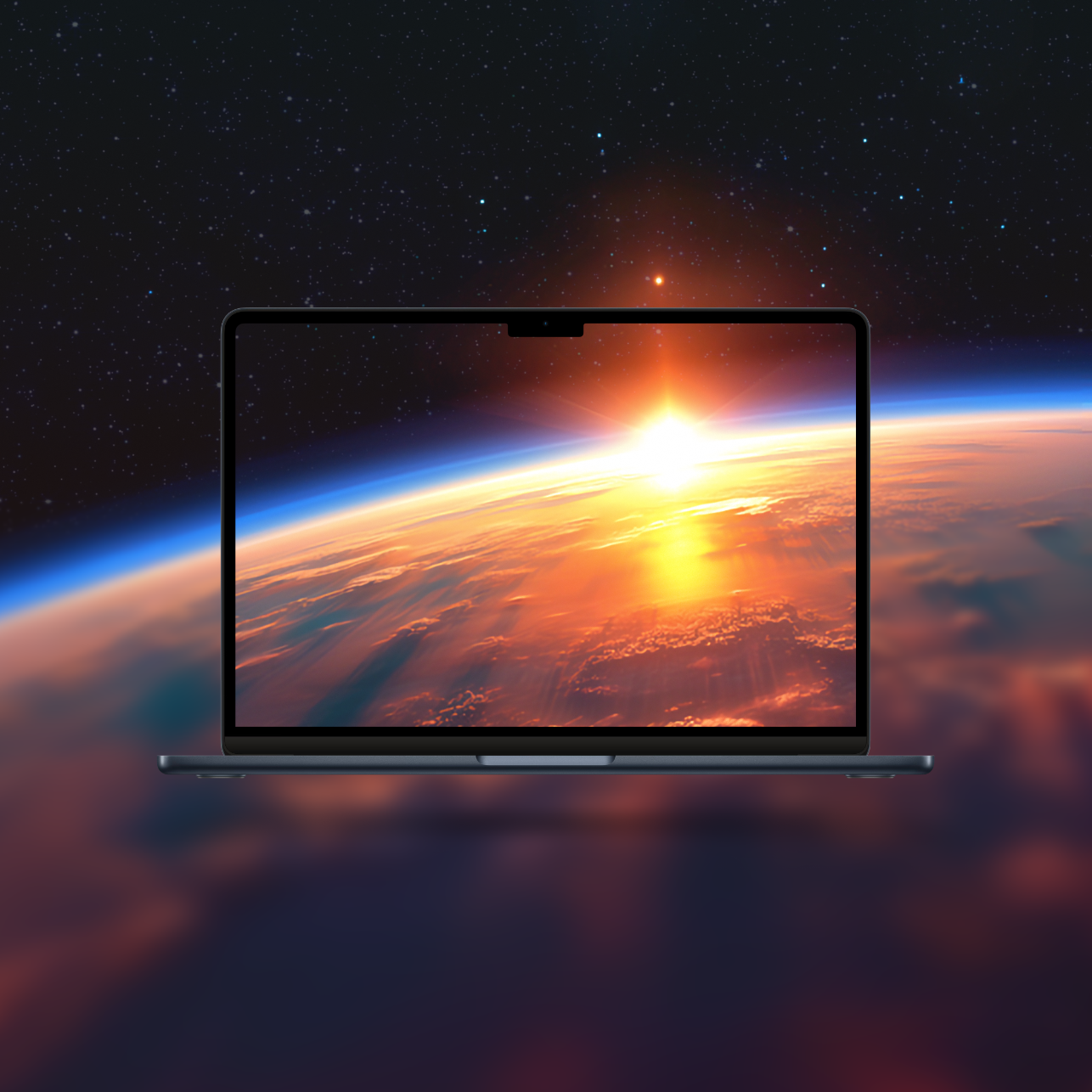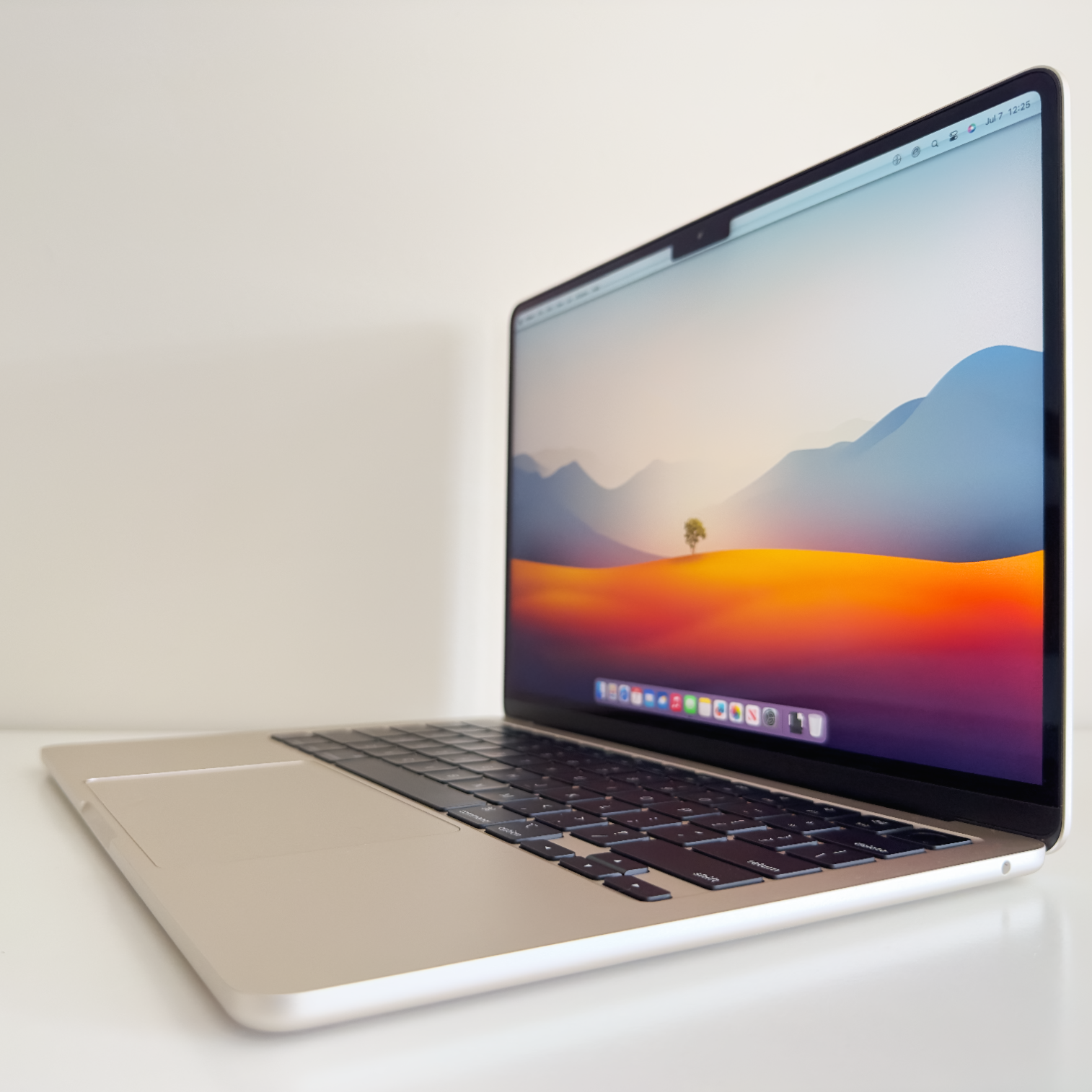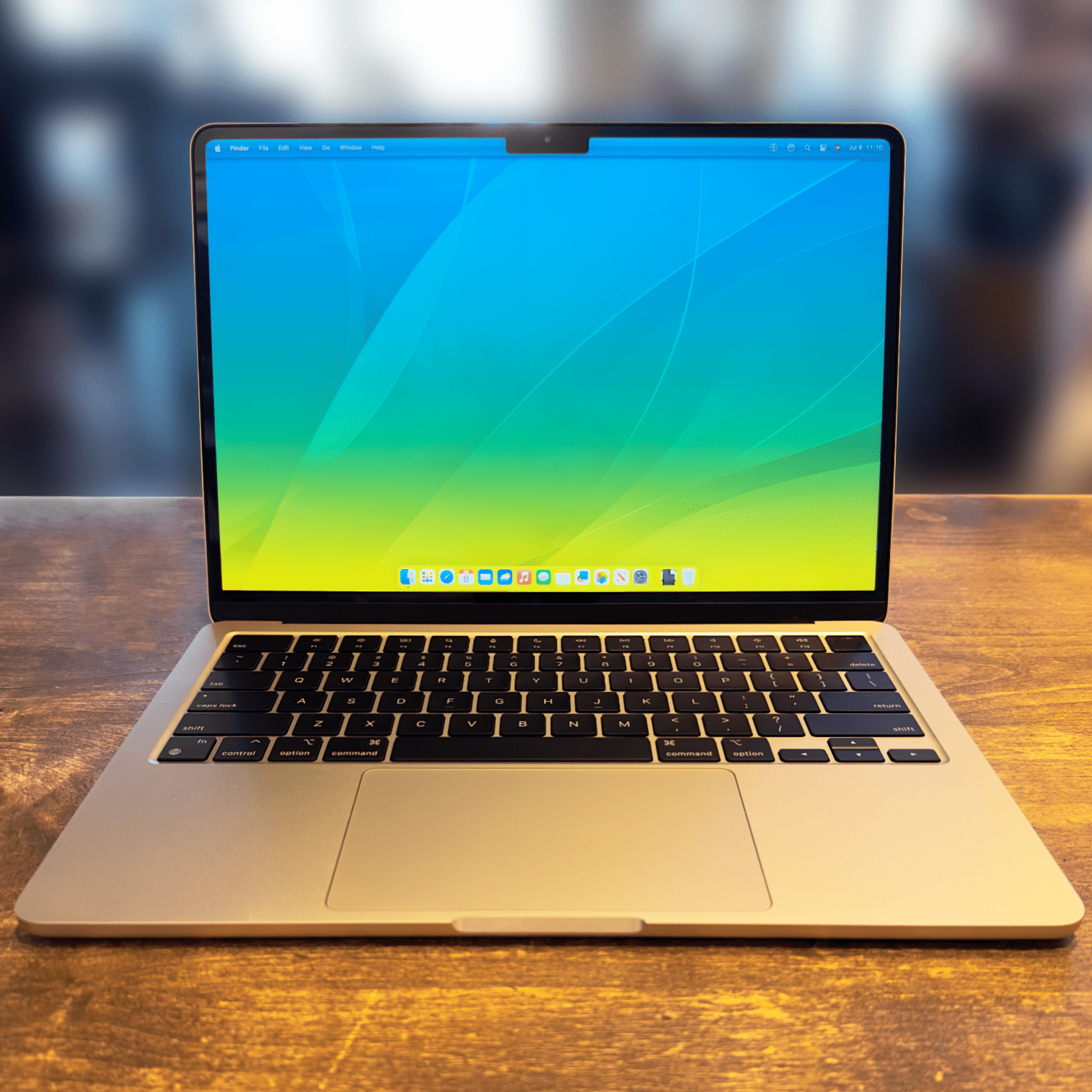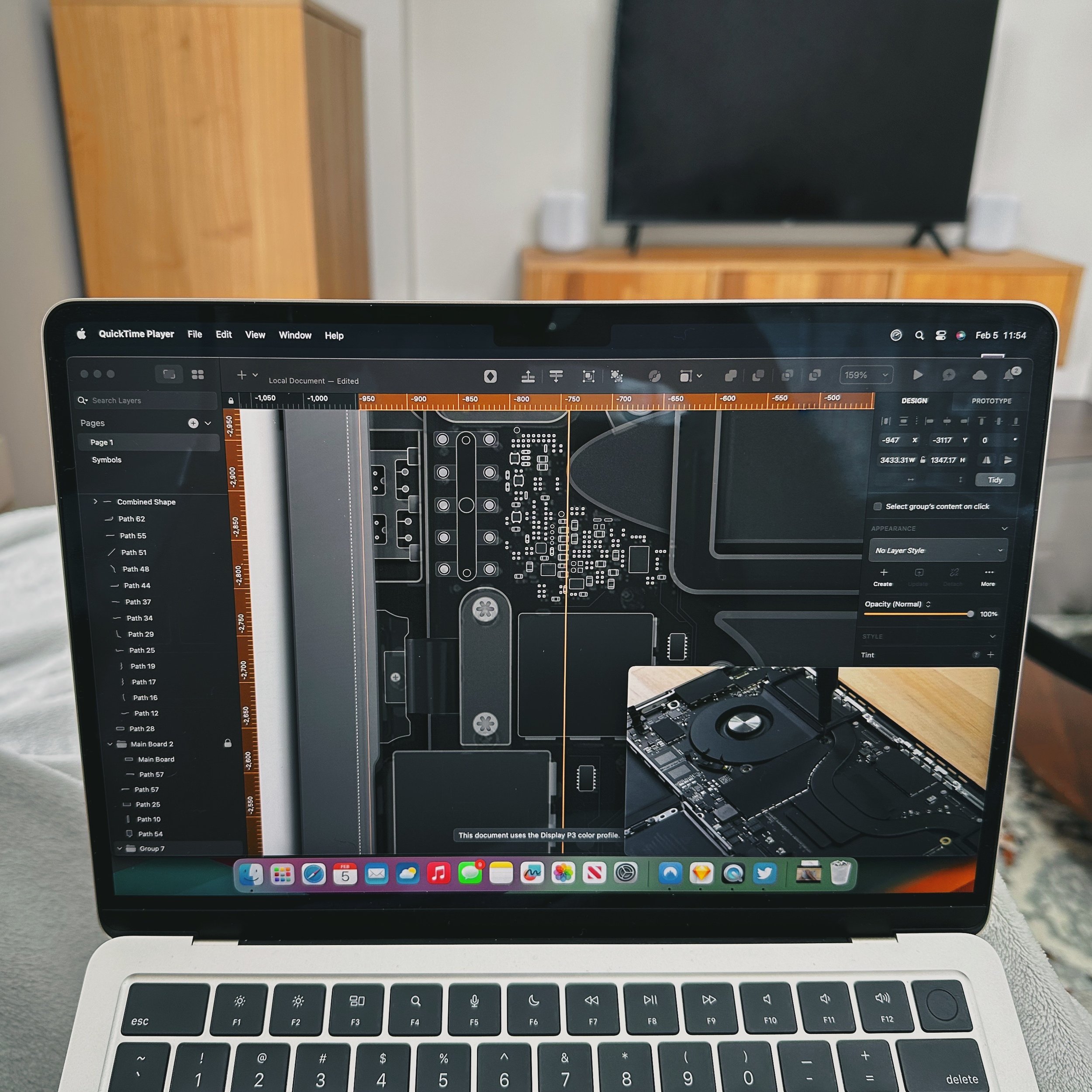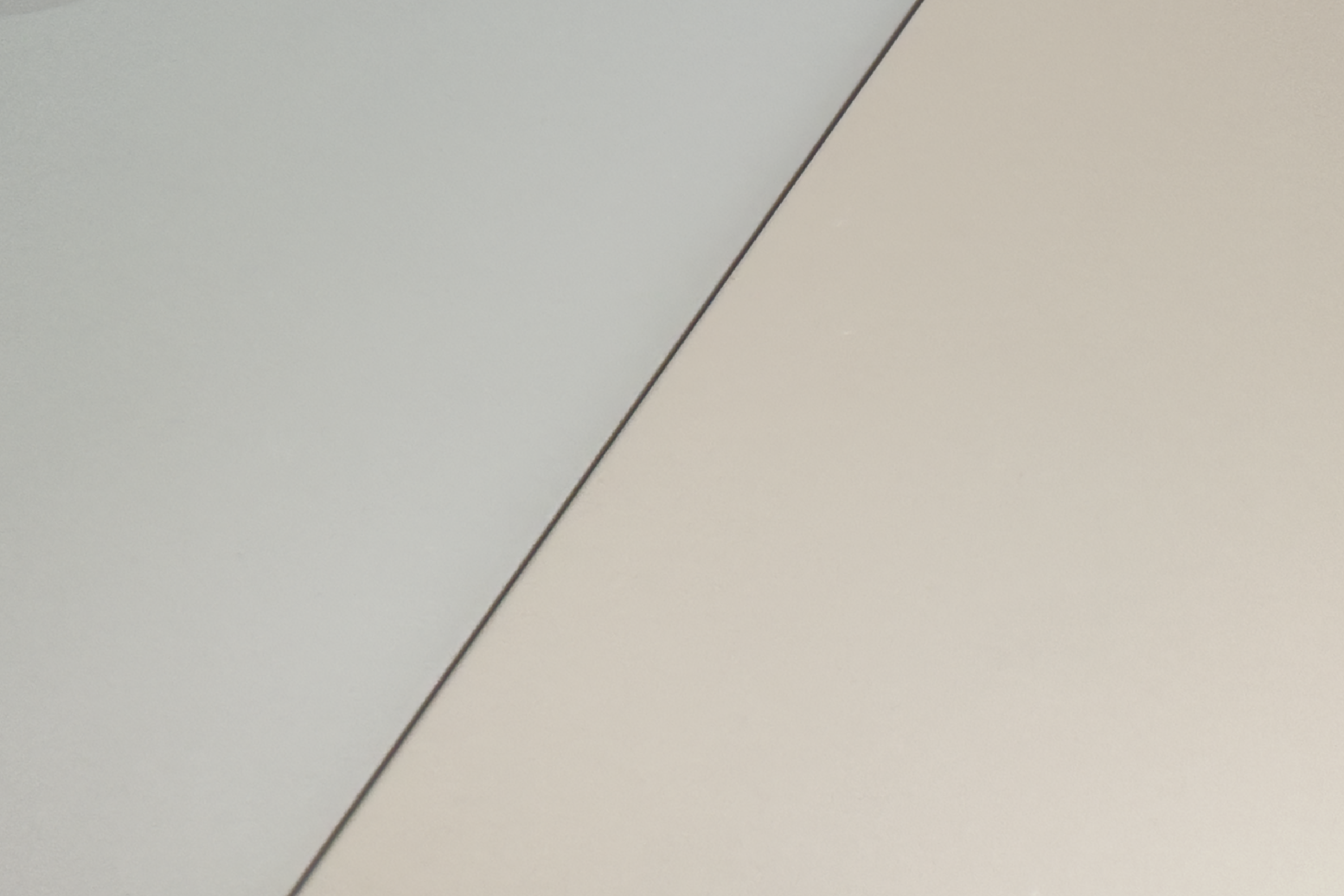M2 MacBook Air: 1 Year Later
Reviewing my trip around the sun with the M2 MacBook Air.
Apple announced the new M2 MacBook Air one year ago at WWDC22, which launched a month later on July 15, 2022. At the time of the M2 Airs announcement, I was already smitten with the M1 MacBook Air. The blend of power, fanless build, exceptional battery life, and thin and light design helped it become the perfect laptop for my needs. The M2 was an elevation on these characteristics, with a 20% more powerful processor and reimagined chassis, which somehow became lighter than the previous version; I was thrilled. And over the past year, I've come to adore this laptop more and more and wanted to share some of my experiences over the past 365 days.
What Air?
The 2022 13.6-inch MacBook Air in Starlight.
I purchased the 13.6-inch M2 MacBook Air specced with the 8-core CPU, 10-core GPU, 1TB SSD, and 16GB RAM. And with Apple's educator pricing discount and back-to-school promotion running at the time, I managed to get this config at $400 off on launch day.
I also purchased the Air in Starlight. Initially, I was all eyes for the stunning Midnight MacBook Air. Still, I shied away from it, not because it was an icky fingerprint magnet (it is), but because I knew that I would fixate on any ding or chip on the product as the raw aluminum would be infinitely more visible on Midnight than on any of the other three colours. My second choice was to get Silver, but my preferred configuration above wasn't available in-store, so I opted for my third choice, Starlight, which was.
I am so happy I went with Starlight. At first, I was skeptical that it might look gaudy or dirty, but Starlight occurs as a warm silver laptop in nearly all lighting conditions. I'd frequently mistake it for Silver until I placed it next to another silver product; only then would differences become apparent. I can understand how the subtly of this shade made it less appealing to people who enjoyed some of Apple's bolder gold variations over the years, but I've come to adore Starlight. Without question, a sleeper hit!
Where I Use the Device
The Cafes & the MacBook Air go about as good together as PB & J, Pizza & Beer, or Milk & Cookies. I’m regularly travelling to new coffee shops and roasters with my MacBook Air to explore the city and write.
Weight was one of the biggest draws to the MacBook Air over a 14-inch MacBook Pro. 2.7 vs. 3.6 pounds may not sound like much, but it certainly adds up over a day of walking and travelling. My MacBook Air travels daily with me to and from work, to cafes, to university, and has travelled coast-to-coast across Canada multiple times in the past year. That one less pound and the MacBook Air's smaller footprint have been a godsend on my adventures. When I owned the larger MacBook Pros, I often debated whether carrying such a rig was necessary, but the MacBook Air makes that decision a no-brainer. It affords me all the power of macOS in a product that weighs nearly as much as an iPad Pro with Magic Keyboard (2.36 lbs). The weight also allows me to take an iPad along for more extended trips and still have the total weight on par with a 14-inch MacBook Pro.
I'm also living a 2-Mac life, also having a desktop setup at home, so there was less need to get a laptop that was performance packed to the gills as there may have been if this was my only device. Had that been the case, I would have opted for a 14-inch MacBook Pro for its balance of power and portability.
How I Use My Air
From the couch to coach to the cafe, the MacBook Air has travelled thousands of miles by bike, boat, car, train, plane, and foot over the past year.
On an average day, I use my MacBook Air more than any other device, more than my iPad and iPhone. It's my device for everything from banking, social media, creative work, and journaling. What separates my MacBook Air from my desktop is the ratio of what I do on each device (e.g., I try to do more performance-based creative work on my Mac Studio) and when I do it (more desktop use in the evenings and weekends).
And because of the Air's lightweight design and small footprint, I find reasons to have it out. During a workday, it's open with my calendar and the documents I'm working on, and often used as the primary audio device whether I'm listening to Apple Music, Calm, or Endel (I listen to a ton of ambient music to help me focus during the workday). I'll also use it to check Mail, reply to any messages, and check social media during the day. I have copies of Sketch and Pixelmator on my Air, so during downtime, I might touch up a project I'm working on that all gets synced across iCloud to do more extensive work on the larger Studio setup later.
At home, my usage tends to triage to other devices until late evening, with my iPad used for checking social media, sports, weather, etc. But before I go to bed, I always finish the day in bed with 20-30 minutes of journalling on Day One. I prefer the Air in that case, too, as it's far more stable than an iPad with Magic Keyboard and for how quickly I can jot down my thoughts on a full-sized keyboard.
Lastly, its portability (size and weight) has made it an ideal travel companion because having access to macOS and Mac-exclusive apps is a dream for content creation outside the home. iPadOS is nice, but there are still tasks that Mac apps do a better job handling. This includes adjusting my website, editing a Keynote presentation, or making last-minute adjustments to a wallpaper before publishing. On a few recent trips to Canada's East Coast, I could confidently publish and make last-minute edits to my Saltern by Night and Rancho Cucamonga wallpapers without missing a beat. This would not have been possible for me on an iPad-only setup.
Rating the MacBook Air
I've broken down my rating into several categories, which get assigned two ratings. "Importance to me" refers to how important a particular feature is to me in my daily use case and workflow. In contrast, "Rating" refers to a more neutral evaluation of the MacBook Air's performance in that category.
Battery Life
Perhaps most noticeable for me has been the Air's battery life. It's incredible. My lightweight tasks with the device during the week mean I can go nearly a week without charging the device and still get ~4-5 hours of daily use. In fact, on several recent 3-4 day trips away from home, I left the MacBook MagSafe charger at home because I knew I wouldn't need it. I'll still take a USB-C cable if I'm in a bind, but to have this much battery in such a portable project is an exceptionally appealing quality of the Air.
Importance to me: Very Important
Rating: ★★★★★
Performance
M2 is an excellent upgrade over the M1 (approximately 20% faster) and orders of magnitude speedier than the previous Intel versions. And unless I am showing managing complex vector images or doing more significant RAW editing, the MacBook Air doesn't stutter. There are rarely any points in my day-to-day that this machine feels taxed, and with the four efficiency cores handling most of the routine work, you get excellent battery life in return. I can't think of many circumstances save for extreme graphics or video work where an M2 couldn't do the job.
The Pre-M1 generation also won't understand the quality of life improvement Apple silicon and the fanless design have made. No performance tradeoff for any low-moderate intensity tasks, no more toasted laps, or jet engine fans whirring up during intensive tasks. Just completely-silent performance. Quiet laptop, quiet mind.
Importance to me: Important
Rating: ★★★★
Display Quality
13.6 inches is an ideal laptop screen size for me, but I'm happy to have gone smaller (I'm still hoping for a reborn 12-inch MacBook). A 13.6-inch laptop perfectly covers most of my single window tasks, but split-view and some apps I use (Sketch, for example) work much better on a larger canvas. For daily writing, calendar work, music, and most single-app performance, 13.6" is a perfect fit, and I would trade screen size to gain portability in a heartbeat. For people who are okay with larger laptops or those with a stationary computer workflow, a 15-inch Air may be a compelling option.
There are significant pluses to moving up to the 14-inch MacBook Pro in terms of screen quality, including a brighter MiniLED panel and 120Hz ProMotion display. Don't rule out an upgrade to the Pro if you want one of the best panels you can get in a laptop, but that's not to say the Air is bad; In normal daylight use they feel largely comparable. It's the same beautiful panel you've enjoyed for years and years - sufficiently bright, glossy, and vibrant, with 500 nits of Brightness and improved P3 colour over the Intel MacBook Airs.
Importance to me: Important
Rating: ★★★★
Fit & Finish
A comparison between Apple’s Silver (left) and Starlight (right). Standalone the warmer tones of Starlight are subtle but become more pronounced when placed next to a Silver product.
I was going to start by saying how a product look is critical to me, but then I remembered that I own a Mac Studio, perhaps the most homely product Apple's designed in decades, so I'm in a bind about my position. I have nothing ill to say about the notch; it vanishes from my awareness the minute I begin working; in fact, I appreciate the real estate it opens up for the menu bar.
The MacBook Air introduced two new colours to the line, Starlight and Midnight, and as I wrote above, I have gotten to adore the warm subtly of the Starlight Colour. I would have loved to own a Midnight MacBook Air, but I am too neurotic to handle the fingerprints and nicks on the device (they don't add character; they're just nicks!). One future ask is that I would have liked to have seen Apple experiment more with colours in this space, introducing more variety, like on the iPad or iMac lines.
I am also a big fan of the new uniform slate design over the wedge shape that has defined the MacBook Air since its introduction. This new design language has produced a more sophisticated-looking product that - may be a hot take - looks more refined than any previous generations of MacBook Air.
Structurally, I have had zero issues with my MacBook Air. It's torsionally rigid, given how thin the chassis is, the Magic Keyboard has been incredibly reliable, and the screen, speakers, and trackpad have all worked flawlessly. I appreciate that Apple doesn't skimp on quality features like the trackpad and keyboard in their products. They set a very high minimum for having a large, best-in-class trackpad for their products and a responsive, great-feeling backlit keyboard. It's nice that these aren't reserved for only their more expensive products.
Importance to me: Important
Rating: ★★★★
Ports
The M2 MacBook Air has 2 Thunderbolt Ports and MagSafe on the left and a headphone jack on the laptop's right side. The port situation is perfect for me as I have a minimal use case for them. I don't connect many peripherals, I don't use SD cards, and I am on the cusp of eliminating all USB-A cables from my home. There was only one scenario in the past year when I had to connect my laptop to HDMI and needed to buy a dongle to accommodate that the MacBook Air fell short. However, I could see people who use SD cards, HDMI or who futz with USB-A regularly finding the port situation lacking and moving up to a 14-inch MacBook Pro to avoid the hassle of carrying or misplacing dongles. My only gripe is that I would have liked a Thunderbolt port on either side of the display, as it would make connecting devices or charging the laptop from either side more accessible.
But despite having two Thunderbolt ports, the MacBook Air is limited to supporting a single external display (up to 6K). I don't know how many folks run two additional monitors with their MacBooks, but the limitation can be frustrating.
Importance to me: Not Important
Rating: ★★
Portability
Like my keys, wallet, and iPhone, my MacBook travels nearly everywhere I go. This includes daily trips to and from work, walking to cafes, on planes, to/from university, and regular trips through the city. This means a thin and light design becomes critical because those fractions of an inch here and pound less there free up space for room to travel with a few more gadgets or simple to travel more comfortably. I want to travel as lightly as possible, and the MacBook Air performs that role better than almost any other Apple product.
Importance to me: Very Important
Rating: ★★★★★
Sound Quality
The sound on the 13-inch MacBook Air is not as loud, intricate, or expansive as it would be coming from a device like a HomePod or MacBook Pro, but that shouldn't surprise you. But for the size, the MacBook Air has excellent sound quality. Apple has spoiled us in this area because you only need to hear the sound from some consumer-grade PC laptops to realize how much we've taken for granted. With the Air's 4-speaker setup, You'll get great sound for personal use on a computer or for playing Audio in small rooms/groups. The MacBook also supports Spatial Audio, so you'll benefit from a more immersive sound than on other devices. Larger laptops, including the 15-inch Air, feature more speakers that offer more task separation and a more comprehensive dynamic range of sound, but that's not to say these aren't great in their own right. Apple is working at the limits of space and physics inside these MacBooks to get as much out of their speakers as possible.
Importance to me: Sorta Important
Rating: ★★★
Price
The MacBook Air starts at $1,099 (down from $1,199 a year ago) and features an 8-core CPU, binned 8-core GPU, 8GB of memory, and a 256GB SSD. This is a great starting price, but costs begin to ramp up quickly if you need more RAM or storage on your device. Doubling the storage and RAM adds 40% to the base cost of the laptop, and adding a warranty inflates that to 55% over the base price. Suddenly an entry-model notebook starts at $1,700. My wife has the entry model, and her more basic use case and the decision to store photos in the cloud make the machine work wonderfully for her. My issue with the starting specs is that, for many, these are decent for today, but they might also hamper the longevity of a device as RAM and storage issues become more of a factor with time. Most people buy a laptop planning it will last them 4-5 years easily, and for them, putting as much money as possible into extra storage and doubling RAM upfront will pay off down the line. So while the starting price is reasonable, the specs could be better for people not wanting to fuss with storage and wanting to maximize the device's longevity.
Importance to me: Not Very Important
This means that the price sensitivity for a laptop is not the most critical factor influencing my purchase.
Rating: ★★★
Excellent starting price, but difficult decisions lie ahead because of the limits the base specs place on longevity and potential storage/RAM issues in the future because of their nonupgradable nature.
Value
The 13-inch MacBook Air is the best laptop I've owned in years. Its fanless design, incredible performance, infinitely long battery life, and durable, sophisticated design help make it more than the sum of its parts. Add to it a best-in-class build quality, degree of fit and finish, and top-shelf TrackPad and Keyboard, and you have one of the best hardware pieces for running the macOS ecosystem. The high cost of upgrading unified memory and storage continues to hamper the value for users needing these higher specced machines. Depending on the user, you are setting up to have an incredible device for the next half-decade, though I think the hand-me-down value or less demanding users can enjoy this computer for nearly a decade.
Importance to me: Important
Rating: ★★★★
Report Card
Recommendations
My primary use case for the MacBook Air is my everyday laptop emphasizing portability and travel. Consider a 15-inch if you like a larger canvas or plan on using this laptop in a more constant setting instead of day-to-day travelling with it. Also, consider upgrading the storage to at least 512GB unless you are partial to using external storage since 256GB may work now but may begin to feel cramped if you house lots of media (images, photos, videos) on your device. Finally, upgrading RAM from 8-16GB again extends longevity (less because of swap memory, more factoring in that future versions of macOS and the apps you run will be even hungrier for memory 3-5 years from now).

